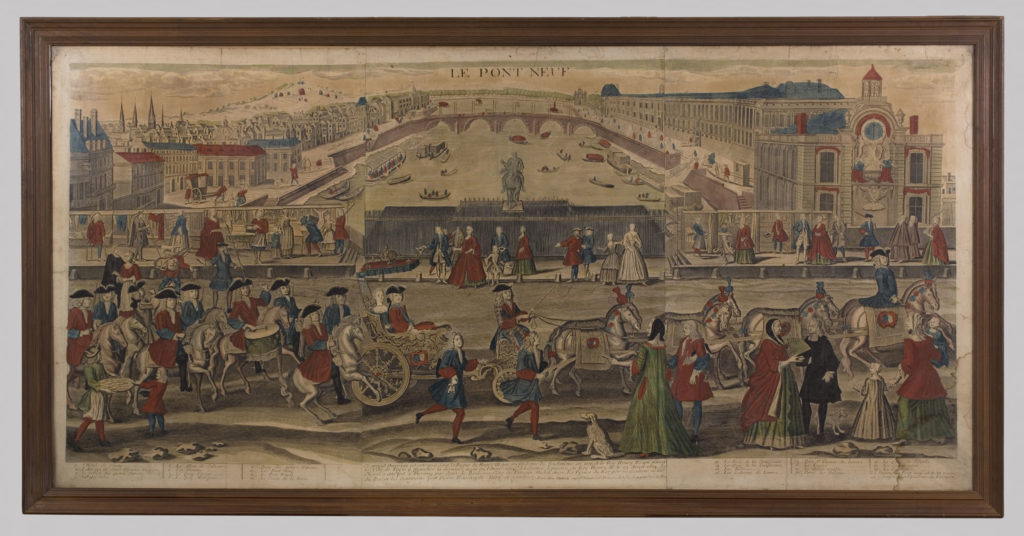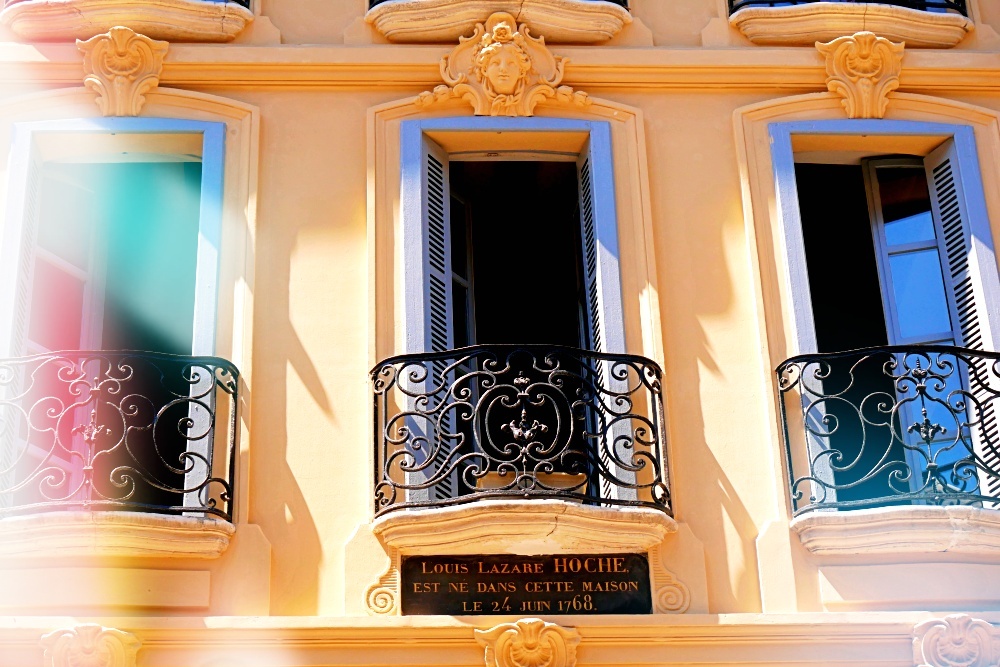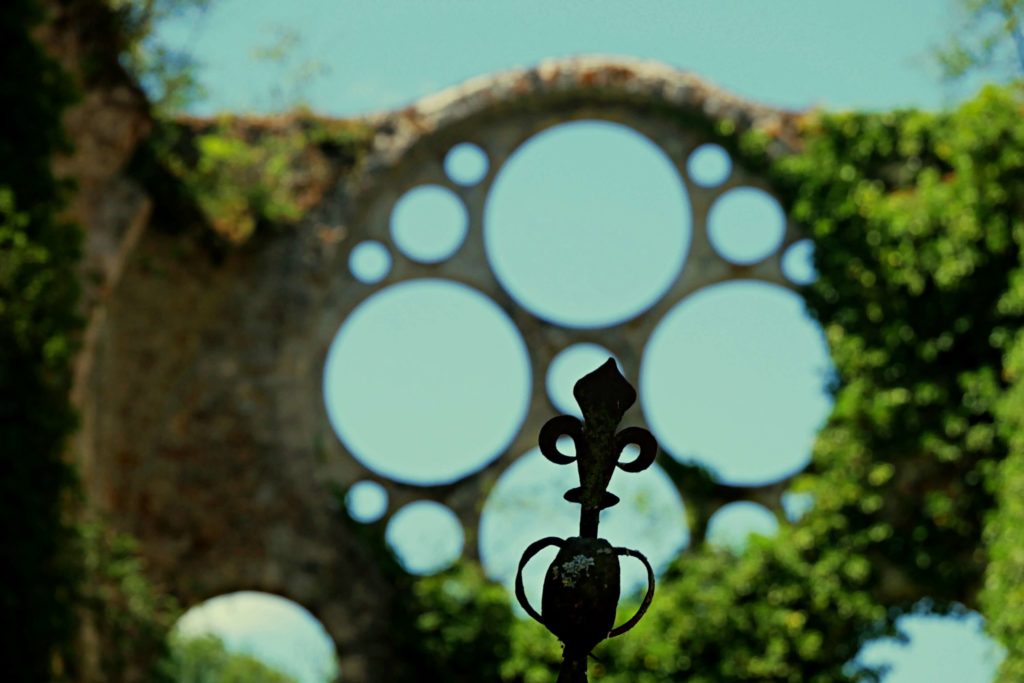Mounted on a steep and rocky promontory overlooking the Alleuze River, is the 12th century Château d’Alleuze. Once a busy castle stronghold overrun by soldiers, it now lies in ruins. Its thick stone walls have seen and heard battles and destruction but now, it is a lovely, quiet place to visit and reflect on the passing of time.
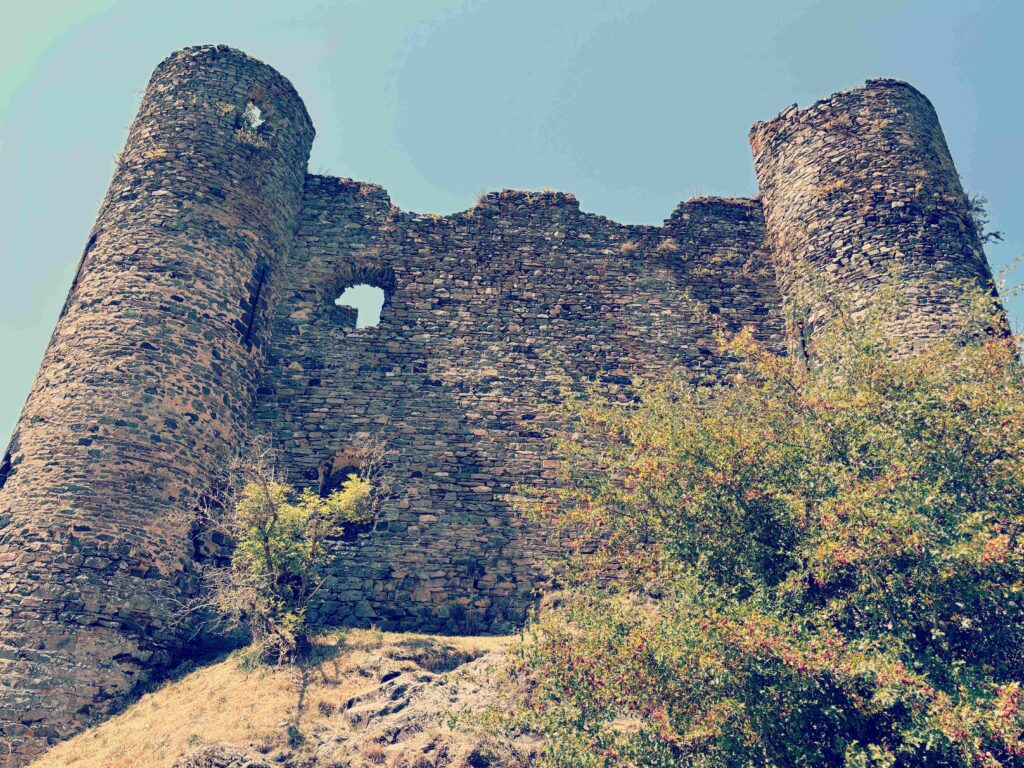
The original château fort was built in the 12th century by Béraud VIII, lord of Mercœur, from one of the most powerful noble families in the Auvergne, although its exact purpose back then is unknown. The land probably remained in family hands, as a century later, the Bishop of Clermont, Guy de la Tour d’Auvergne, a descendant of the lords of Mercœur, was in possession of the château, and spent time and money to make the castle a stronghold for the area. It may sound strange that a bishop, a religious man, should construct a fortress but at the time, bishops were usually from aristocratic families and appointed to the positions by the king, rather than being men who had religious vocations. The more land which belonged to the bishopric meant more money for the church (bishops and archbishops tended to live rather luxurious lives), so it was in the best interest of such men that their property was protected. Also, once they had pledged allegiance to the French king, they were obliged to protect French soil. The nearest large town, Saint-Flour, was a formidable, fortified town high on a hill, and the rebuilt and reinforced château d’Alleuze was intended as an outpost to defend this citadel.

Another century, another de la Tour d’Auvergne, and it was Henri, continuing the family dynasty, who was the bishop of Clermont from 1376 until 1415. His bishopric still in possession of the castle on the Alleuze river, Henri de la Tour d’Auvergne had more to worry about than his weekly sermon. The Hundred Years War (1337-1453) meant that the English were invading France, and by the middle of the 14th century were already in the strategically important region of Auvergne. However, the title “English” was used rather haphazardly, as allegiances changed and nobles and armies from all over France were at war for land and power. There was no chivalry, no knights in shining armour on white horses. This was a violent struggle, often between bands of soldiers with allegiance only to themselves who burned and pillaged houses, or even the disposessed villagers themselves who literally had nothing to lose.
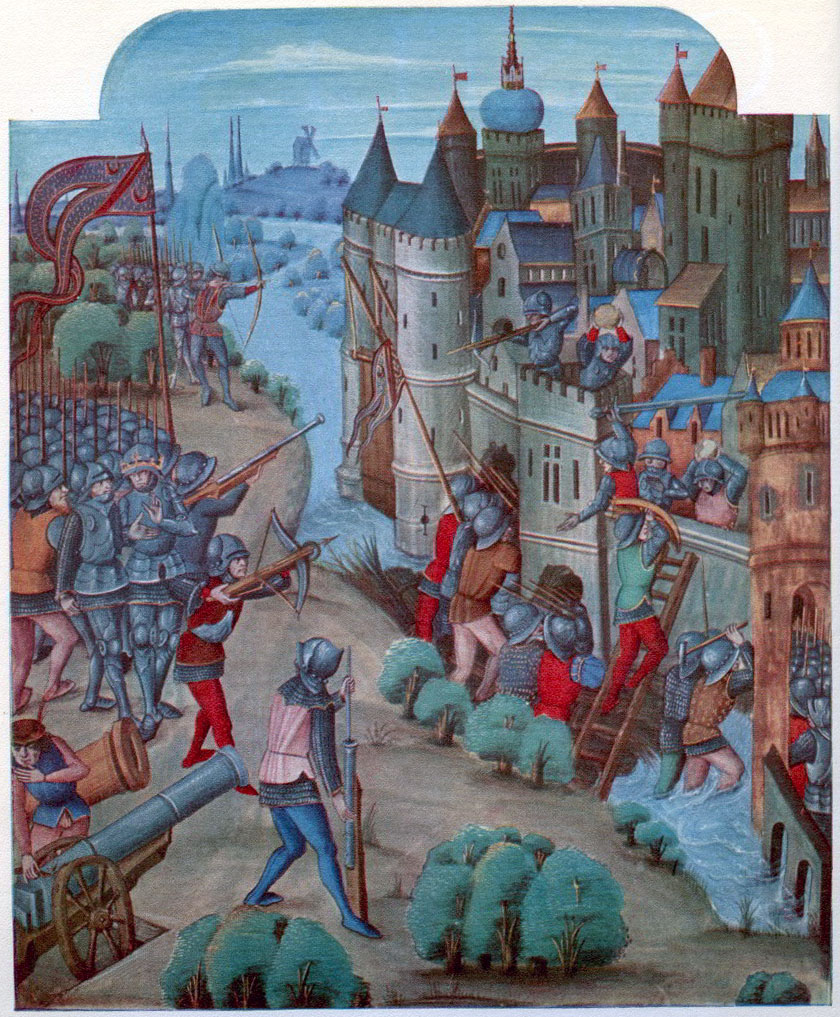
In 1383, the château d’Alleuze was occupied by Bernard de Garlan, a much-feared warlord from Brittany, who was allied with the English. He was also known as the Bastard of Garlan or to the general public, the Evil Hunchback. Accounts of the time record that it was an easy invasion, as the castle was protected only by a chamberlain and his wife (or three guards, depends on which historian you read). Having assailed several other nearby fortresses, de Garlan was soon comfortably settled at the castle on the Alleuze river and in control of much of the surrounding area. A letter from 20 August 1387 from a baliff in the area of Forez to a bourgeois in Lyon even noted that 600 English troops were lodged at Alleuze, ready and waiting to ravage the Auvergne. An attack by royal French forces in 1387 failed to dislodge de Garlan, and he retaliated with an assault on the town of Saint-Flour which almost destroyed the citizens with its intensity. It was only with the signing of a peace treaty in 1390, in Mende, and a payment of 30,000 livres to de Garlan that he moved himself and his loyal army out of the château d’Alleuze.
The citizens of Saint-Flour well-remembered their treatment at the hands of the English, and hearing (false) rumours of their return in 1405, set out en masse to destroy the castle. Bishop Henri de la Tour d’Auvergne, back to being in possession of his château, was understandably outraged, and demanded compensation. The court ordered that Saint-Flour must either pay the bishop 6,000 livres or rebuild the castle; they chose the latter, which was completed in 1411.
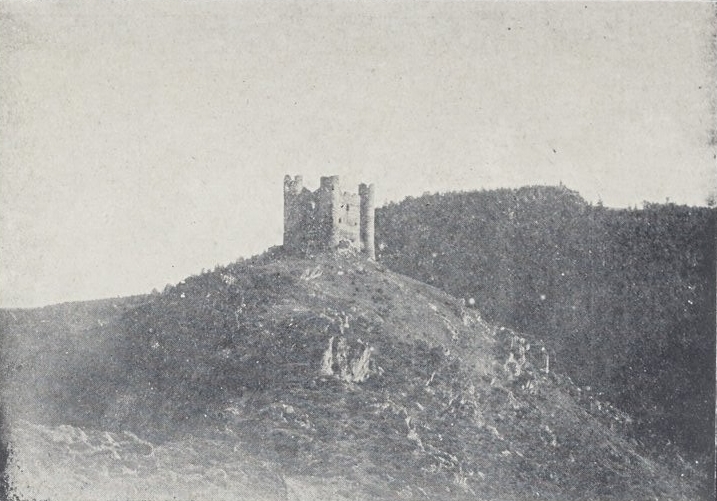
Little is known about the chateau’s later years. It was taken by the Huguenots (Protestants) in 1575, and at sometime used as a jail by the bishops of Clermont. It is not known when or if it was deliberately destroyed.
The château d’Alleuze, perched around 70 metres high on a rocky hillock, is a fairly simple, rectanglular shaped structure with four round towers at each corner. It is a ruin; only the outside walls remain. Alcoves and doors, some stairs and the remains of a fireplace let us imagine a life there. Open to the elements, sunlight streams through murder holes and windows, while nature attempts its takeover.
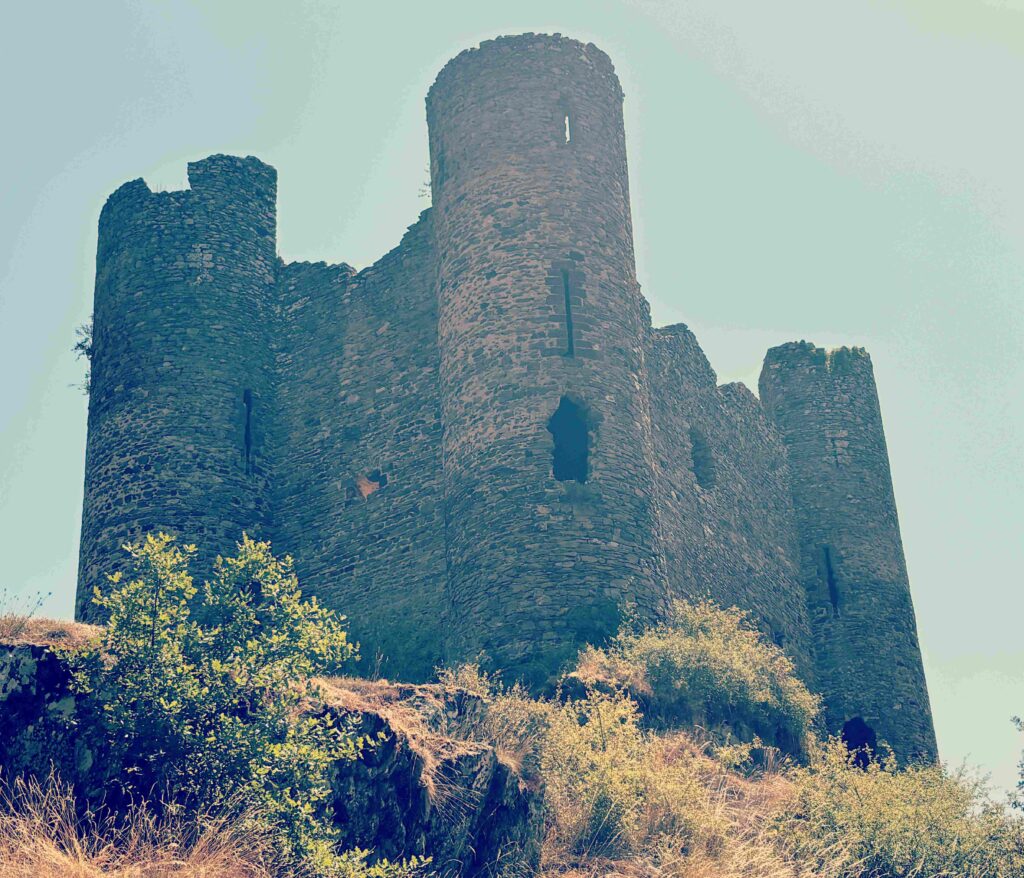
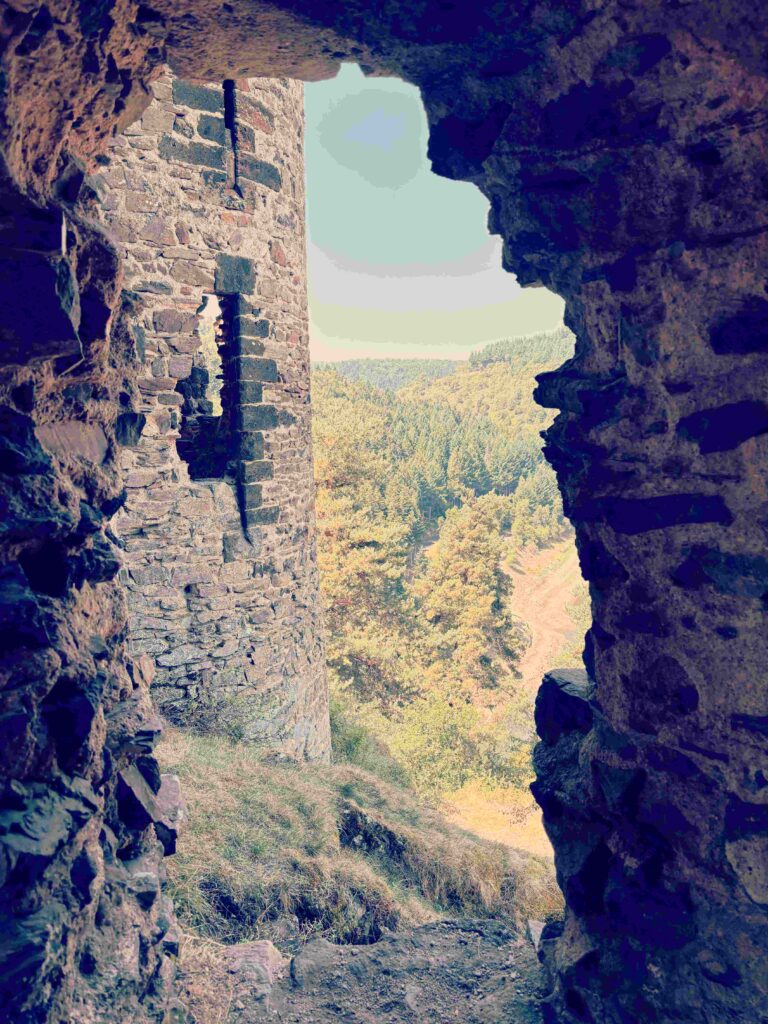
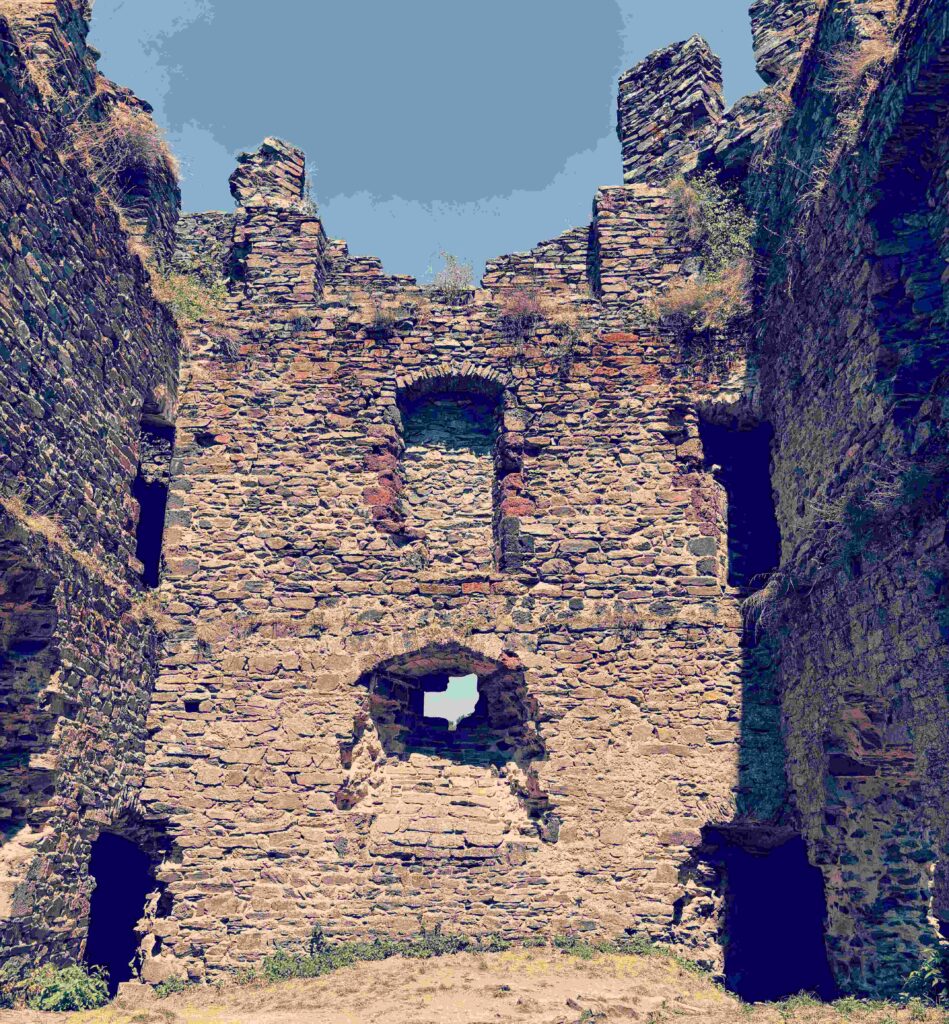
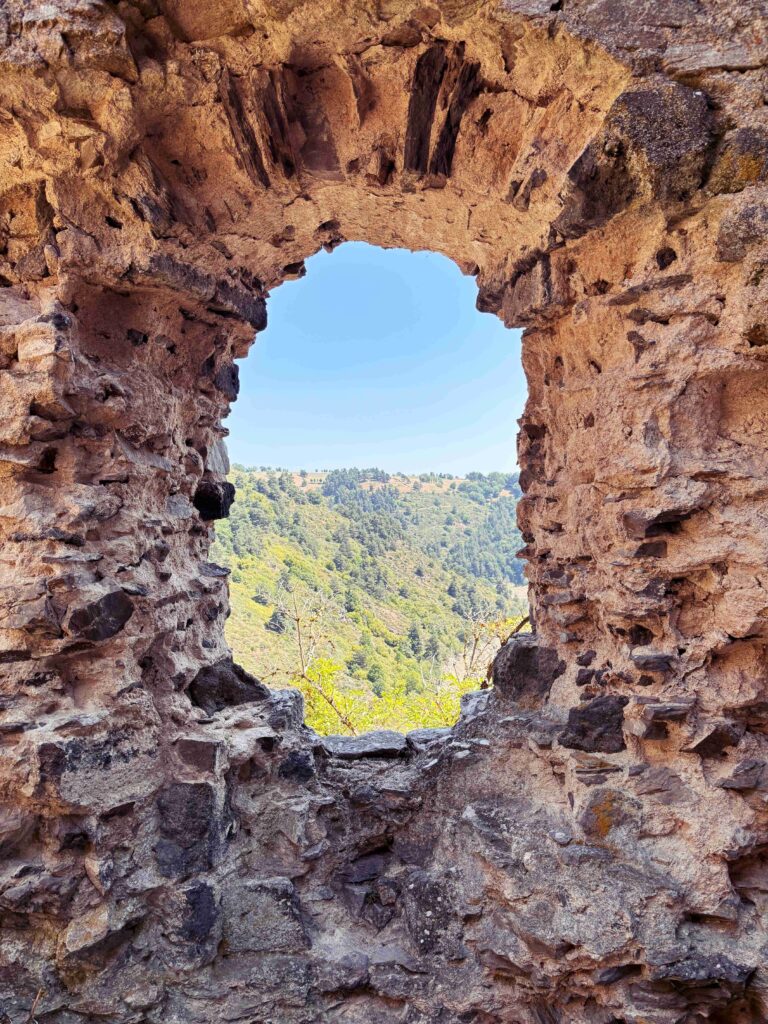
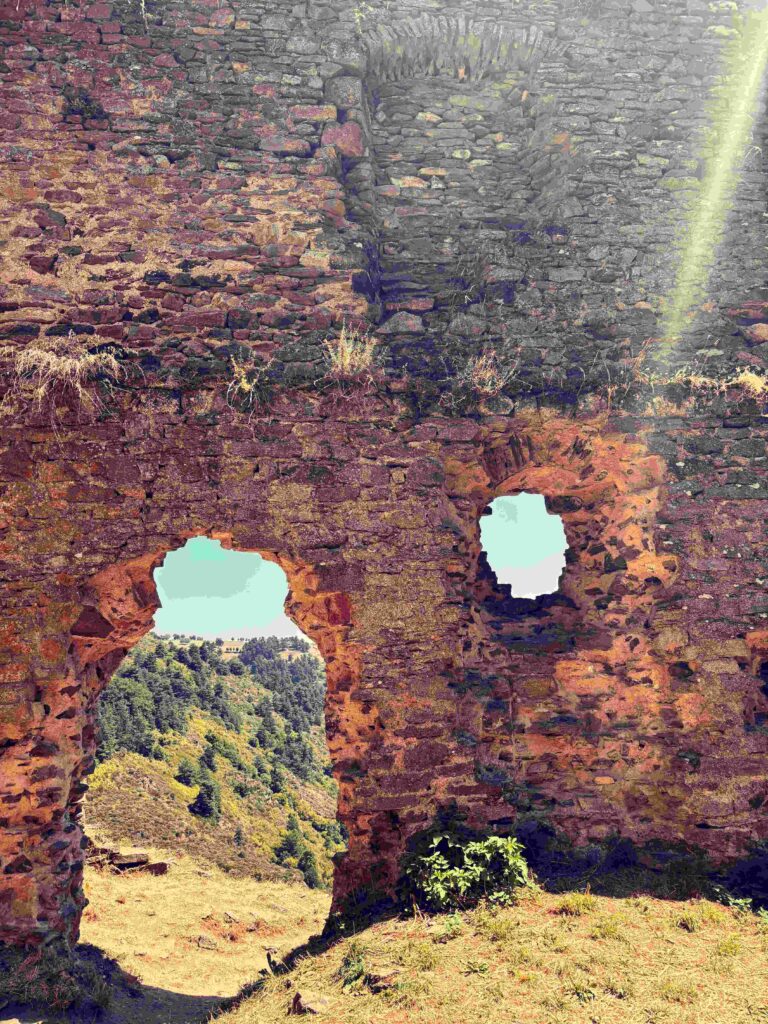
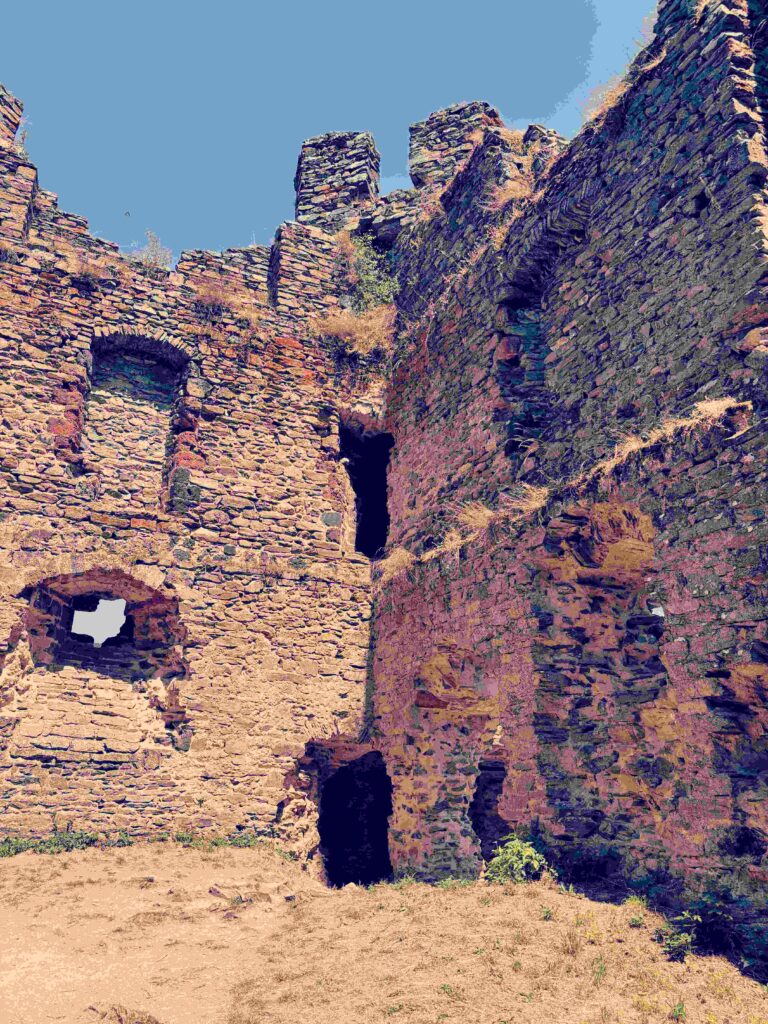
Located in the Cantal department, around 10 km of winding roads from Saint-Flour, you can walk up a rocky path to the Château d’Alleuze (wear good shoes!). There is no entry fee. The castle and the nearby Viaduc de Garabit can be visited in a morning or afternoon.
Related post: A visit to the Viaduc de Garabit
Sources
https://pop.culture.gouv.fr/notice/merimee/PA00093431
H. Boubounelle, Saint-Flour et ses environs, Saint-Flour, 1905
Deydier Elie. La Haute Auvergne pendant la Guerre de Cent ans. La Résistance de Saint-Flour aux envahisseurs. In: Revue Historique des Armées, 24e année, numéro 3, 1968. Numéro spécial : Ve Région militaire. pp. 26 www.persee.fr/doc/rharm_0035-3299_1968_num_24_3_8426

